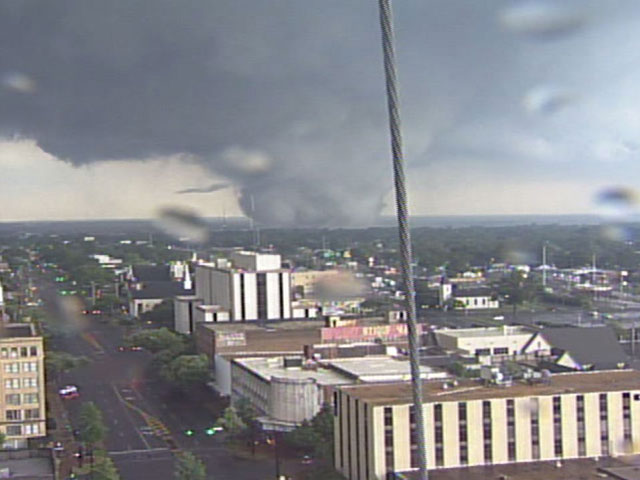Four years ago, anyone who was living in Alabama can tell you where they were and what happened. The state was struck with a string of violent tornadoes in a generational outbreak that killed over 200 people. I remember staring in disbelief as local television stations showed the devastation live. I remember messaging with friends to make sure everyone was safe. It was truly horrific. Yet, it also could have been much worse. If the EF4 tornado that cut a path through Tuscaloosa had been just a few hundred yards to the north, it would have cut through the heart of campus. I don’t even want to think about what the loss of life on campus might have been if that had occurred.

One of the strange things about the tornado outbreak was that the damage was so bad in some places and other locations never even saw a drop of rain. At our house, I’m not sure we even had a cloud in the sky while 20 miles away there was complete destruction.
Two days later I went to Tuscaloosa for the first time to help a local nonprofit distribute food and supplies. My strongest memory is thinking that it all looks like it does on the news. The difference is that everywhere you looked— 360 degrees— was tornado damage. It was truly unbelievable.
When I think back to the way the University of Alabama responded, I think there are lessons for every campus. Unfortunately, we know that colleges are not immune from natural disasters from earthquakes to floods to hurricanes to tornadoes. Colleges can learn from the experience of Tuscaloosa to prepare for making decisions should the unthinkable occur.
1. Get students out of town. One of the first responses by UA was to cancel classes, cancel graduation, and send everyone home. The city needed to free up infrastructure (both personnel and equipment) and sending students home helped with this. College towns are notoriously quiet in the summer when the students are away. When a crisis happens, people wondering around and in the way are no help. Send your students home for at least a little while to help out local officials.
2. Open campus facilities. Universities have valuable facilities that can be used for assisting victims. Residence halls, cafeterias, large spaces such as recreation centers all can be used to support the immediate needs of the community. Have a plan for using this spaces including staffing. Also, realize that some staff may be victims as well so contingency plans are useful.
3. Leverage existing campus systems to provide volunteer opportunities. Particularly for a large scale disaster, one of the biggest challenges is managing the wave of volunteers, supplies, and resources that begin to pour into the area. Use existing networks and campus offices (for example: student affairs or community service office) to organize. Provide administrative and logistical support for the offices to dramatically ramp up their operations. It is easier to build up existing infrastructure than creating a new one from scratch.
4. Provide a way for students to help. When a disaster strikes their community, students are not only willing but eager to help. Put them to use. A university has a large and generally physically fit population to lend assistance. Using the campus systems noted above, provide opportunities for students to help with clean up and other duties where strong young people can help.
5. Use campus expertise for immediate help and support. As a research university, UA was poised to help the community in other ways. Using emergency grant funding from the NSF, engineering faculty conducted structural analyses of damaged buildings to assist with future construction and building codes. This immediate research was critically important as the data can be lost when clean up begins. You don’t want to delay the clean up process so leveraging local researchers was enormously helpful. Faculty and graduate students can provide all kinds of immediate assistance from testing water to supporting K-12 schools to conducting damage assessments. The ability to serve in this role will depend on the expertise of the university, but the community can leverage local experts in a crisis.
Unfortunately, we know that another natural disaster will occur on or near a college campus. There is nothing we can do about that.
However, by learning the lessons from April 27th, I hope our colleges and universities can be ready to support their communities.
Cities and higher education institutions don’t always get along. When disaster strikes, we can set that aside and use the resources and expertise of higher education to support victims.
I can’t think of a better way for higher education to show how much teaching, research, and service matter than leveraging those missions for a community in crisis.

